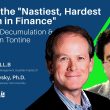by Stephen Vanelli, CFA, Knowledge Leaders Capital
While many perceive the S&P 500 Index to be a broad innovation-heavy index, in a way it is and in a way it isn’t. It is an innovation-heavy index in so far as aggregate R&D investments total $478.8 billion, but it isn’t so innovation-heavy in the sense that only 161 out of 500 companies (32%) conduct any R&D at all.
In the table below, I summarize my analysis of the index, considering trailing 12-month statistics including R&D, capital expenditures, net income, operating cash flow, and market cap.
Focusing first on the non-R&D spenders, there are 339 companies in the S&P 500 that spent in aggregate zero on R&D, but they collectively spent $543 billion in capital expenditures. They have an aggregate net income of $1.01 trillion and cash from operations of $1.42 trillion. They are valued at 29.17x trailing 12-month earnings and 21.33 trailing 12-month operating cash flow, looking at the median valuation of the 339 companies. Using aggregate data, they are valued at 42.45 trailing net income and 30.22 trailing operating cash flow. These are not cheap multiples by any stretch.
Next, let’s consider the companies that do conduct R&D. They spent $478.8 billion on R&D while spending only $331.8 billion on capital expenditures. It is a simple observation to say that these companies have a dedicated strategy of investing in intangible assets over tangible assets. These 166 companies have an aggregate reported net income of $786.3 billion and reported operating cash flow of $1.08 trillion.
If we adjust our thinking and consider R&D as an investment, similar to capital expenditures, then we should not be flowing this investment through the income statement. In theory the income statement represents the income generated in t+1 from a capital stock in t. So, deducting current R&D investments from current period income is not only asymmetric from an accounting standpoint—since capital investment is not measured this way—it is also time inconsistent.
So, while we maintain a proper database of intangible-adjusted fundamentals and valuation metrics for over 10,000 companies around the world using our proprietary method of capitalizing intangibles, we short-hand for this exercise what adjusted net income and operating cash flow should look like. We do this by simply adding R&D expenses back to net income, thereby eliminating the investment asymmetry issue and time inconsistency issue.
When we do this simple adjustment, we find that trailing 12-month adjusted net income is $1.27 trillion and operating cash flow is $1.56 trillion. This translates into a median adjusted P/E of 14.37x and P/CF of 14.37x. These are a 39.5% and 32.6% discount respectively to reported valuation metrics.
Looking at aggregate valuations, these R&D investors are valued on a trailing 12-month basis at a P/E of 15.02x and P/CF of 12.21x, a 64.6% and 59.6% discount to reported valuations.
There is no doubt that companies investing significant sums of money in R&D represent the most innovative section of the market. There is also no doubt that the accounting for these companies is flawed by using reported metrics, which mandate that companies expense R&D. Lastly, there is no doubt that properly measured, these innovative companies are selling at a tremendous discount to their less innovative peers.
Copyright © Knowledge Leaders Capital
















